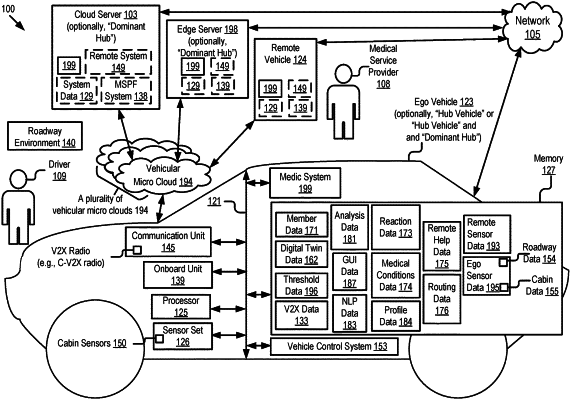| CPC B60W 60/0016 (2020.02) [B60W 40/08 (2013.01); B60W 60/005 (2020.02); G16H 40/67 (2018.01); B60W 2040/0818 (2013.01); B60W 2540/221 (2020.02); B60W 2540/229 (2020.02); B60W 2556/50 (2020.02)] | 20 Claims |

|
1. A method executed by a processor, the method comprising:
determining, by the processor, that a driver of an ego vehicle is experiencing a debilitating medical condition;
overriding a protocol to decrease an autonomy level of the ego vehicle responsive to inattentiveness of the driver to a driving interface of the ego vehicle so that the driver can be inattentive to the driving interface and the autonomy level is not decreased; and
modifying an operation of an autonomous driving system of the ego vehicle to increase the autonomy level of the ego vehicle to decrease a driving responsibility of the driver responsive to the debilitating medical condition.
|